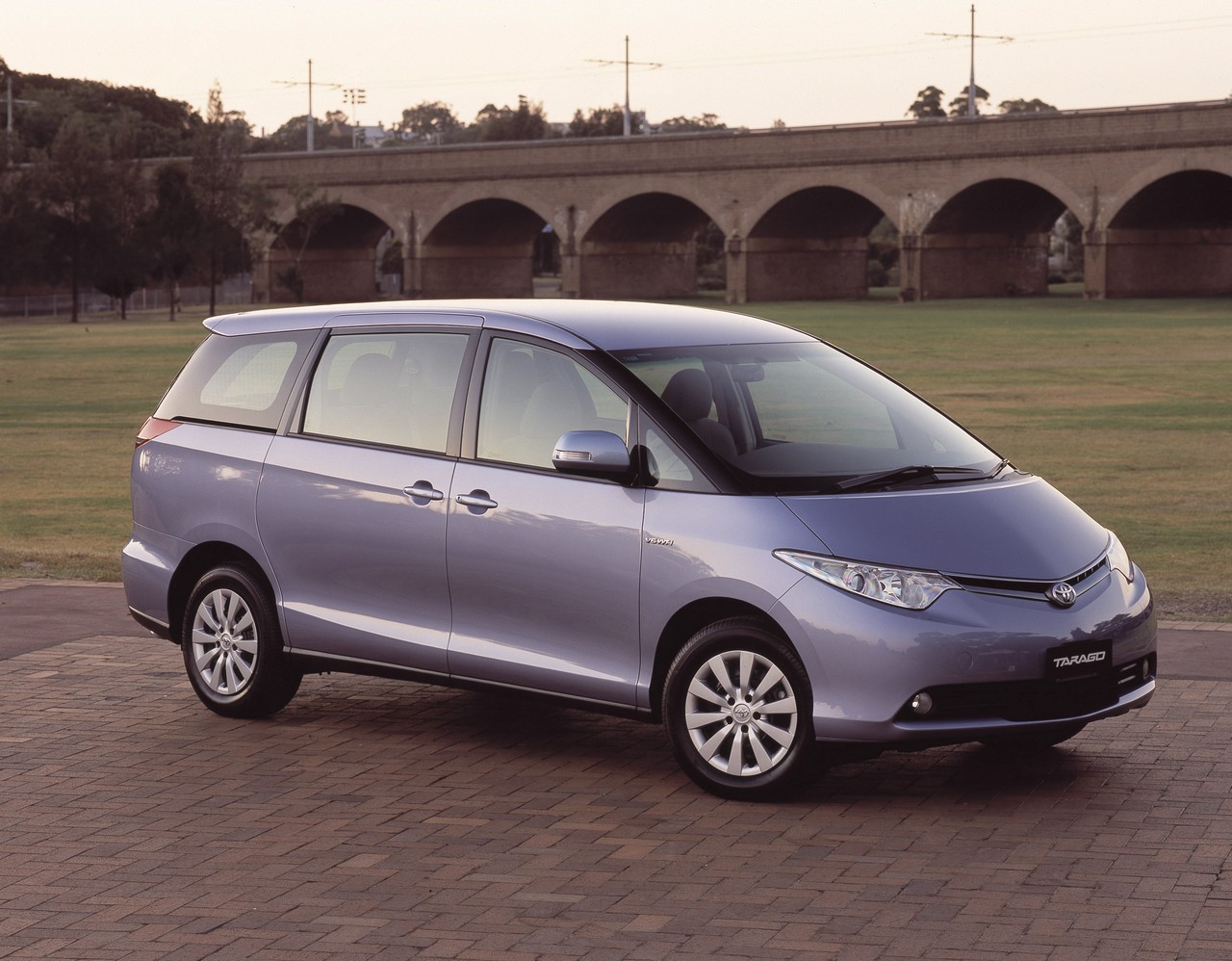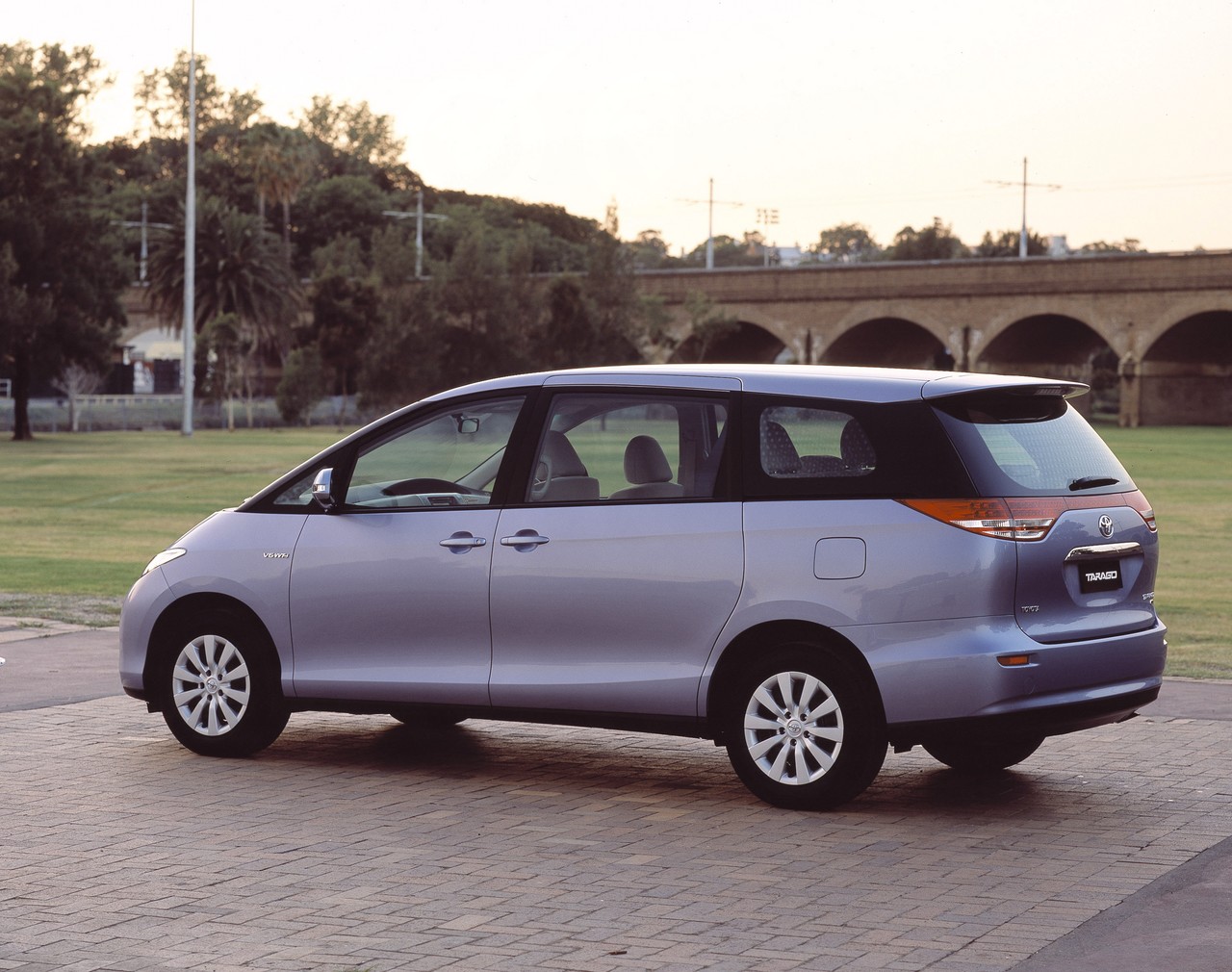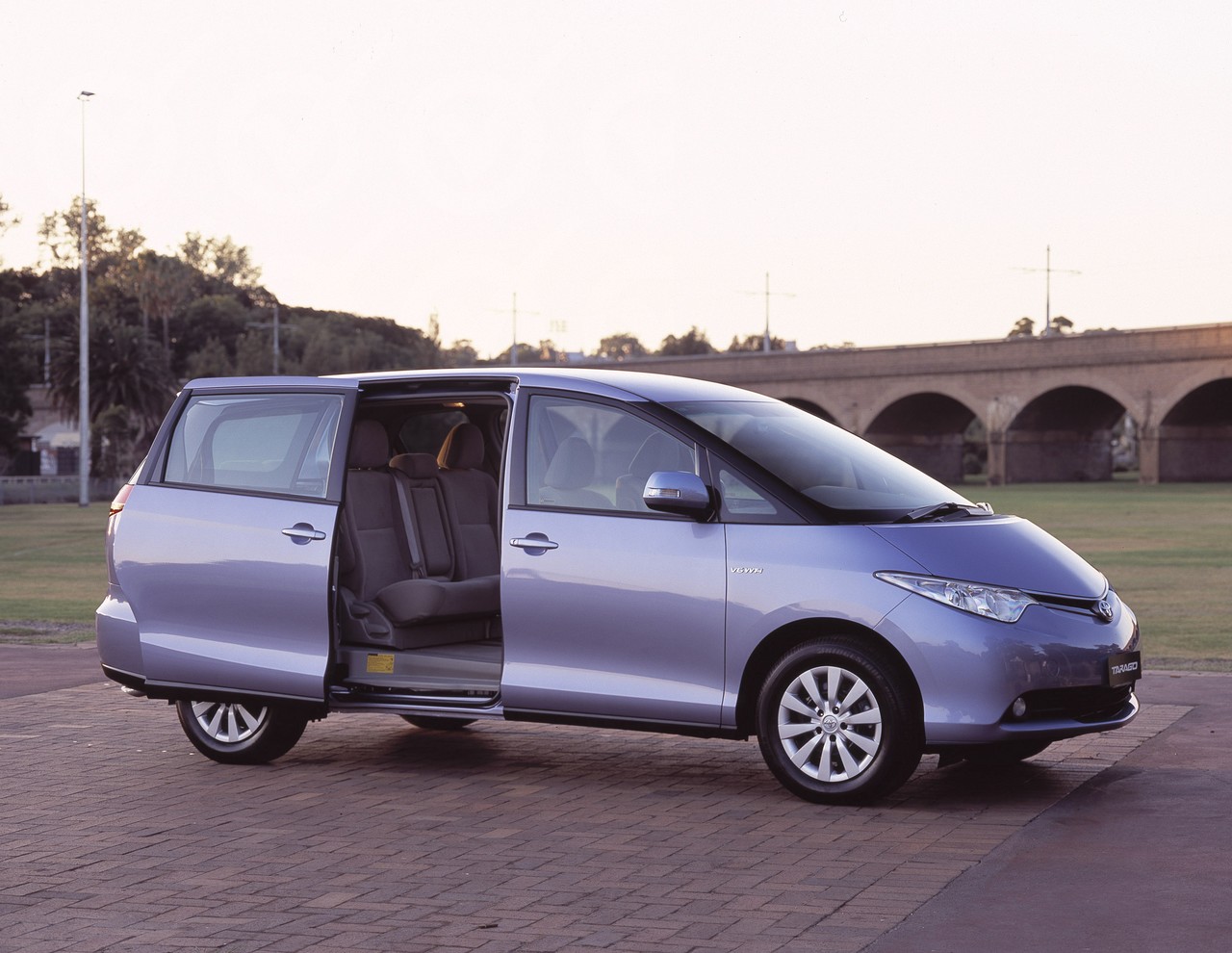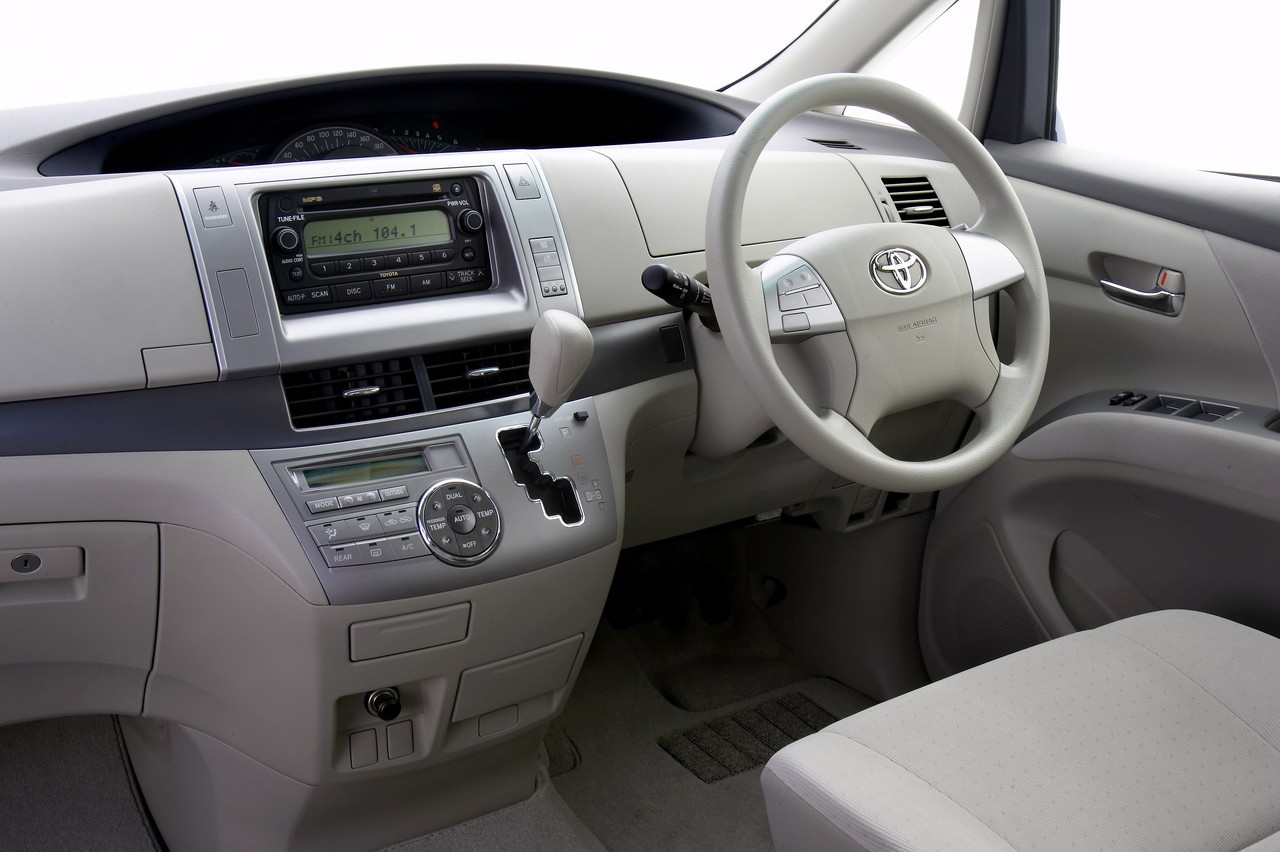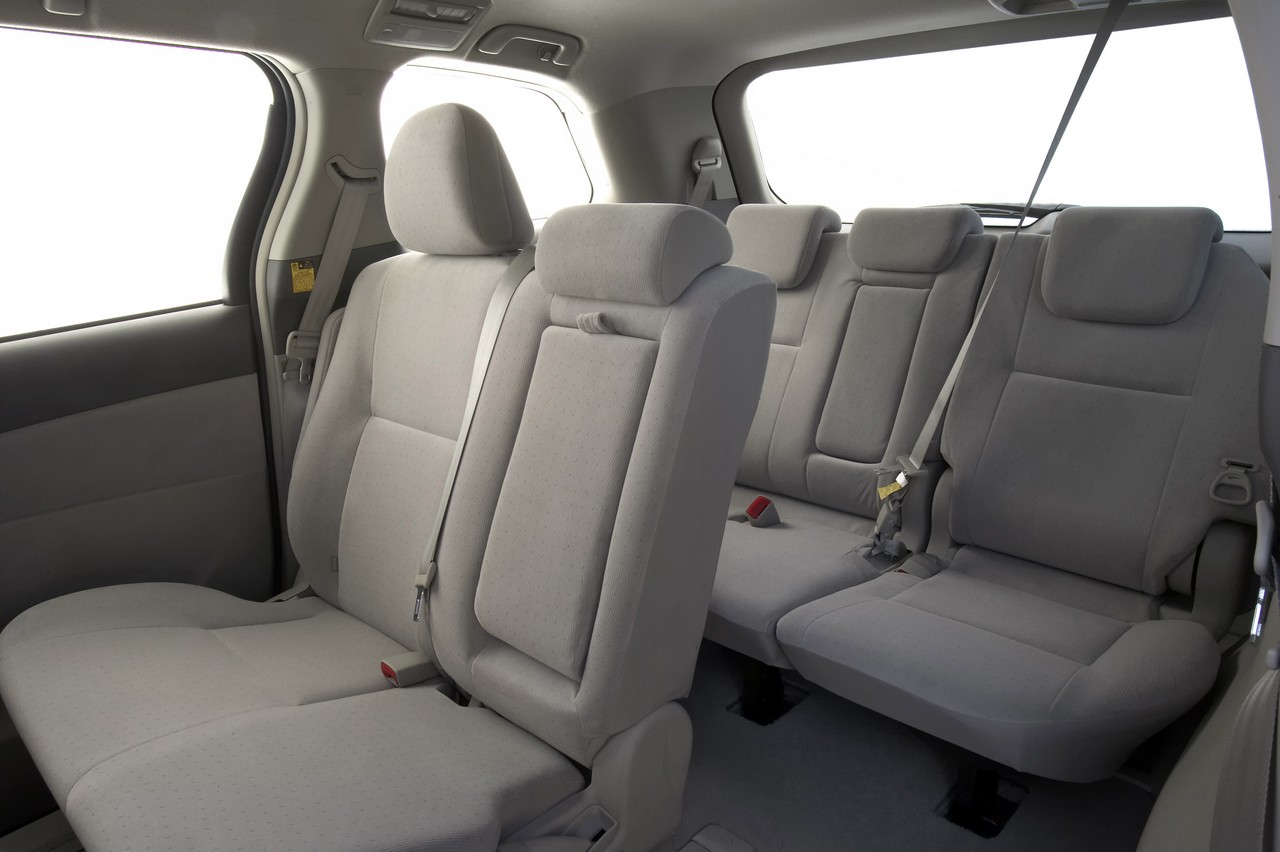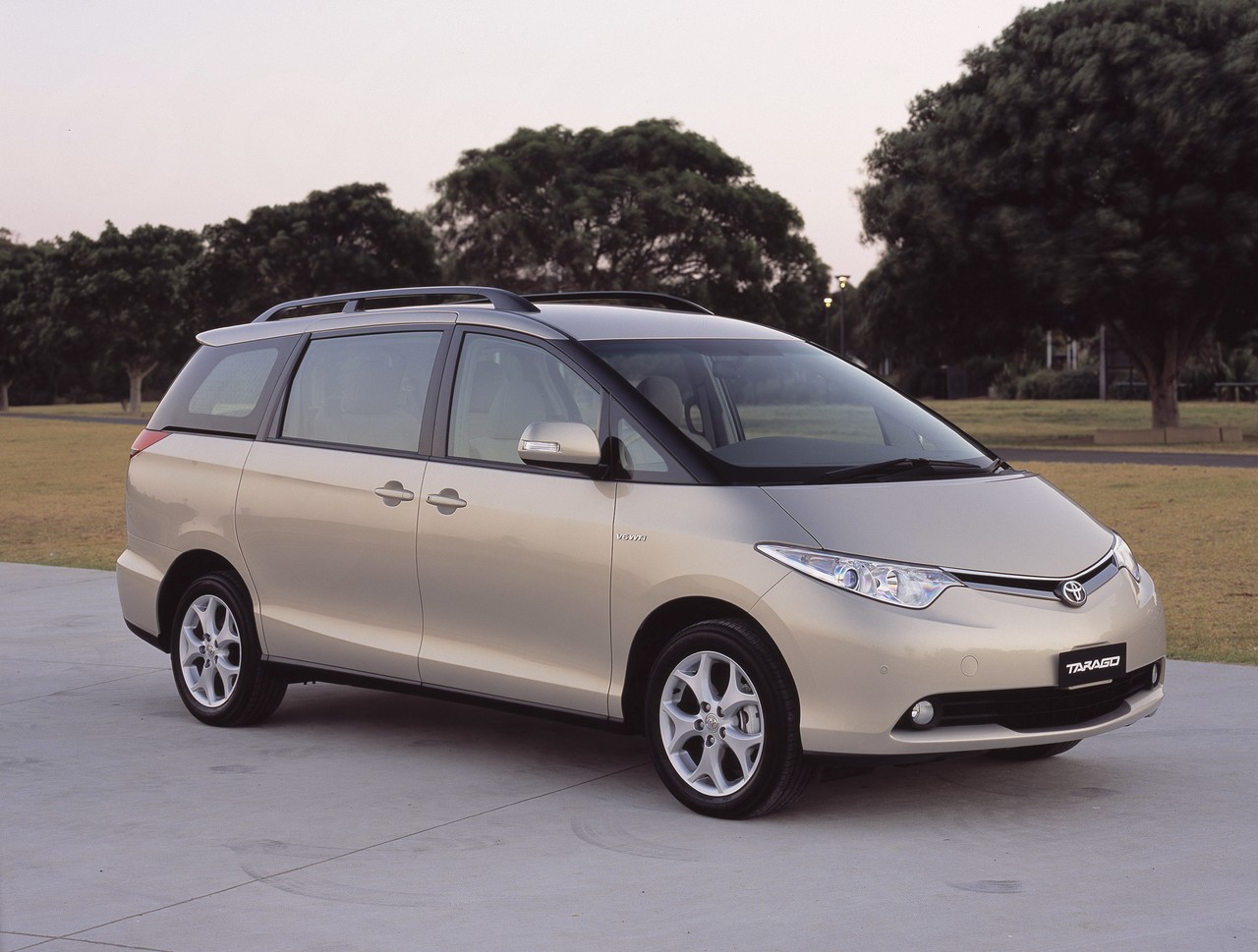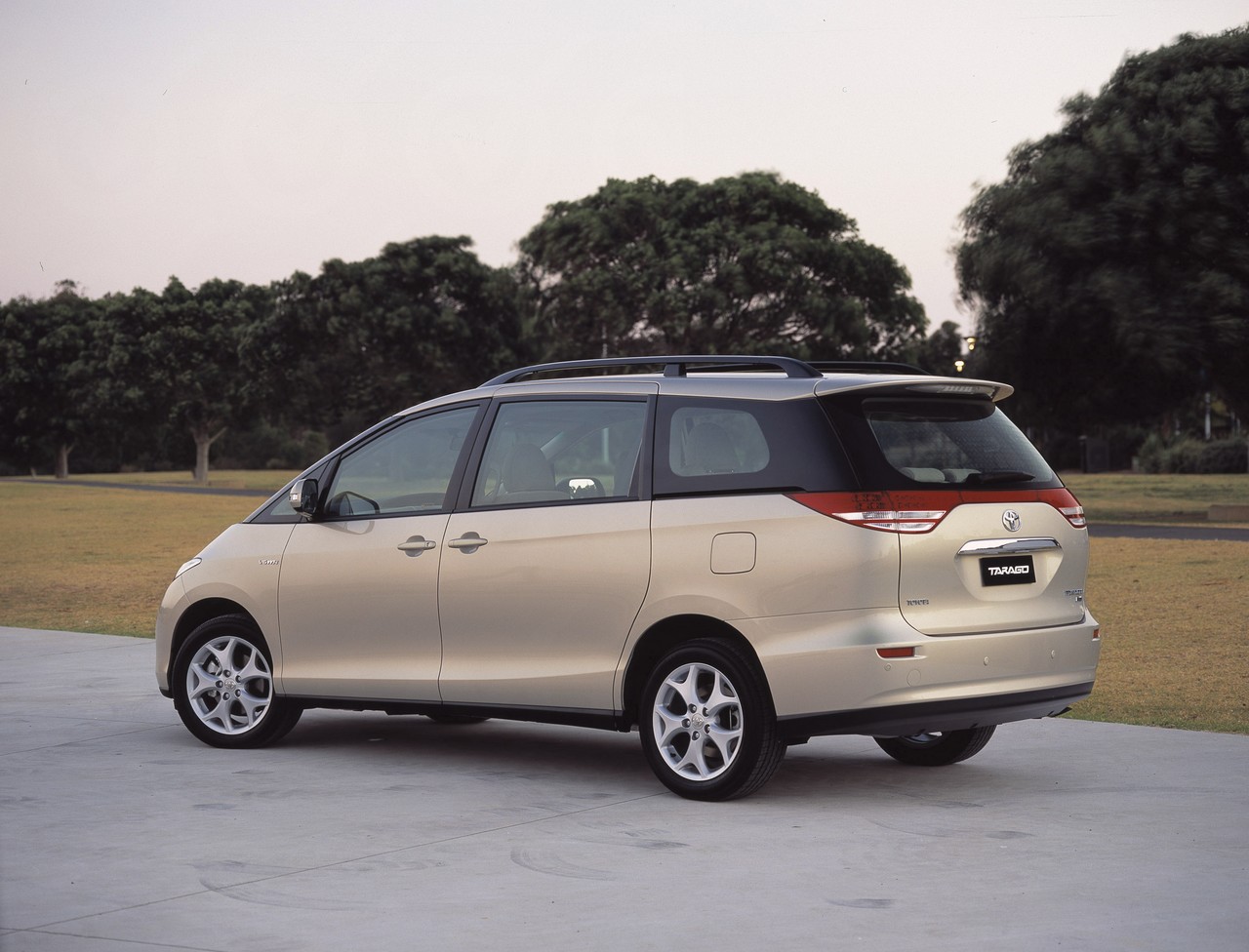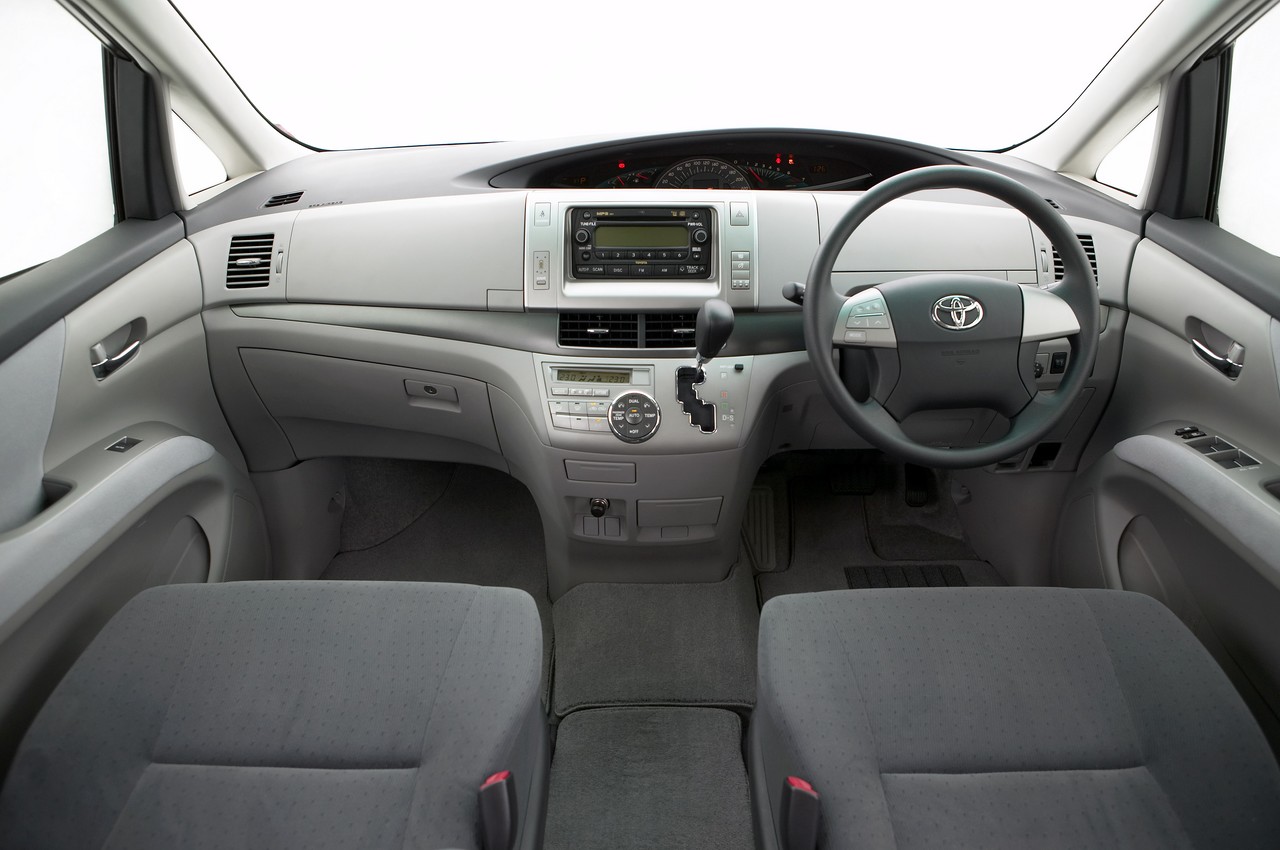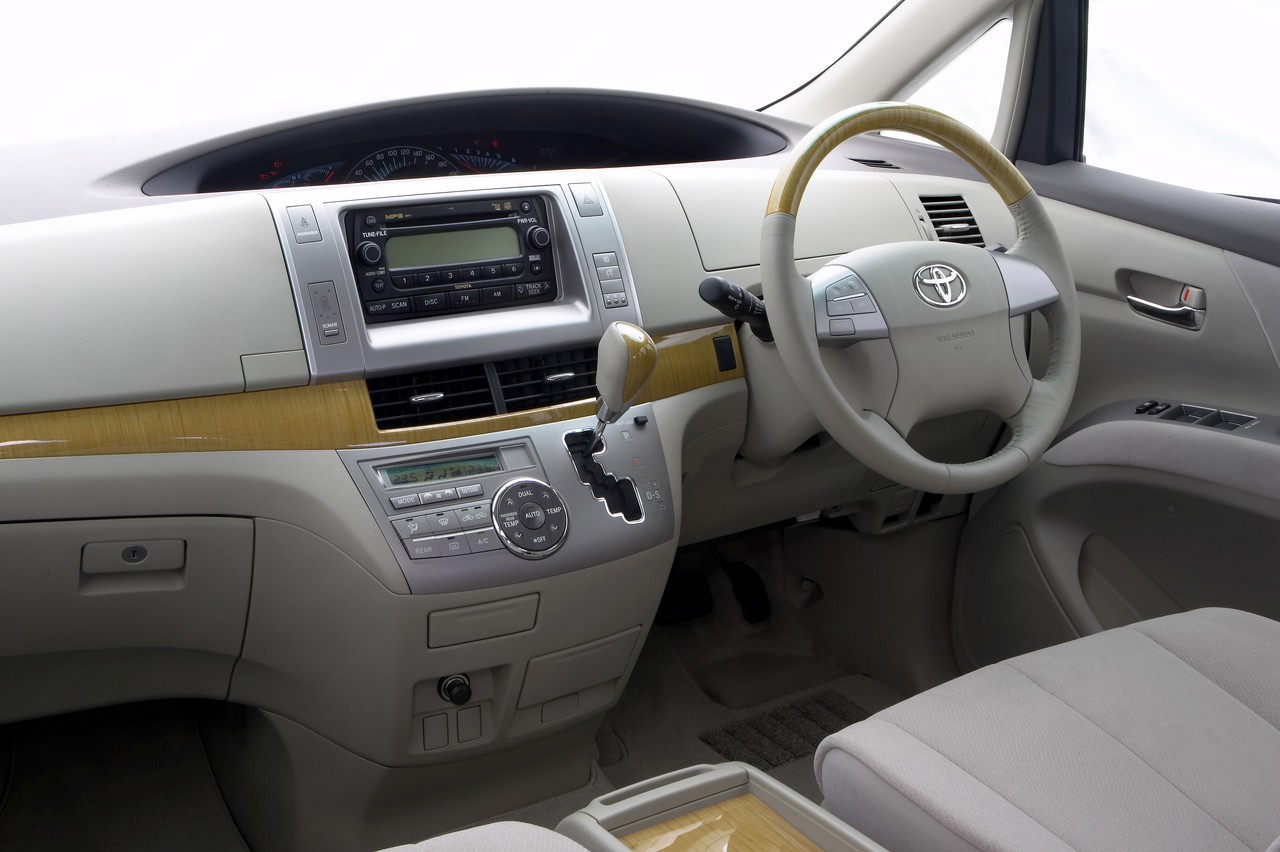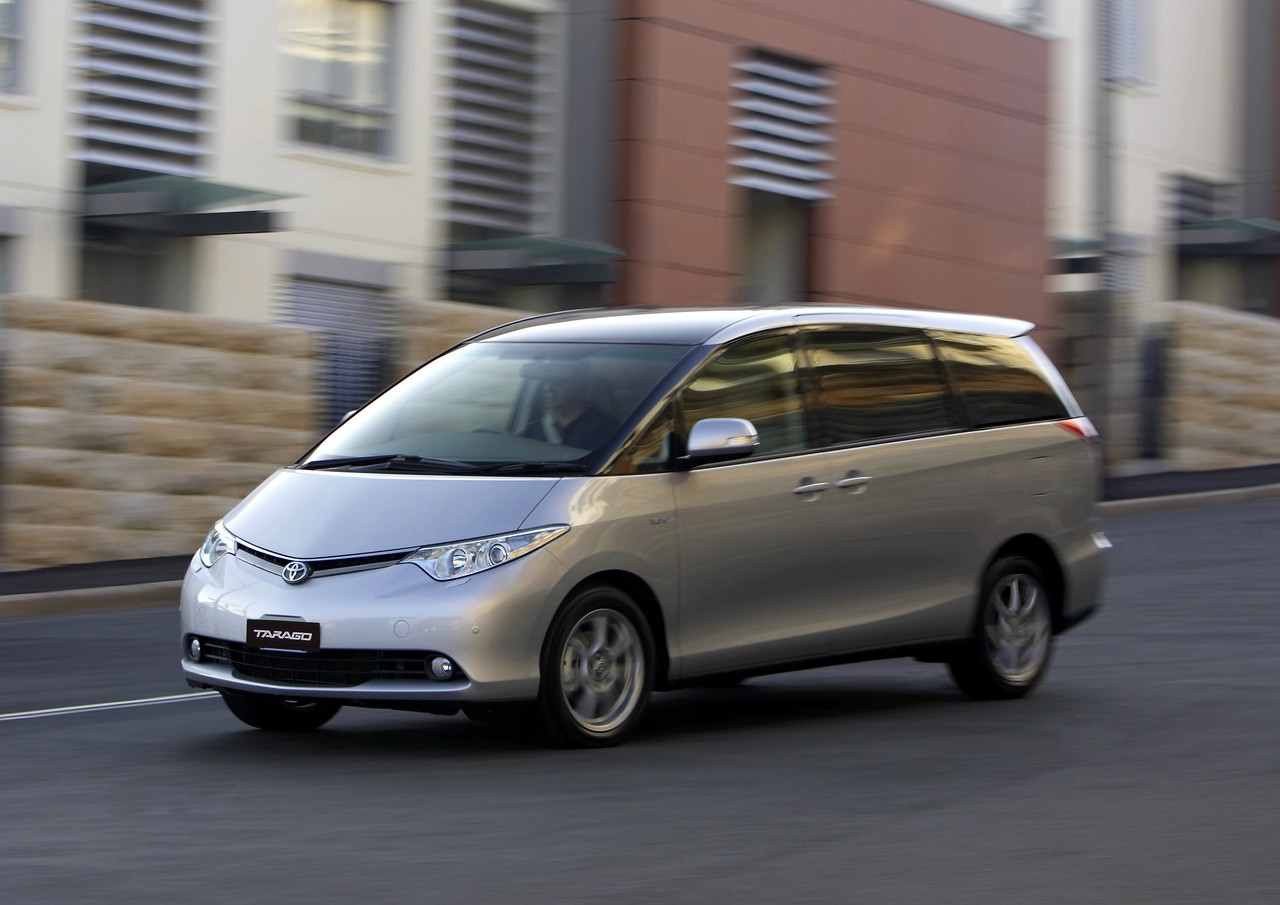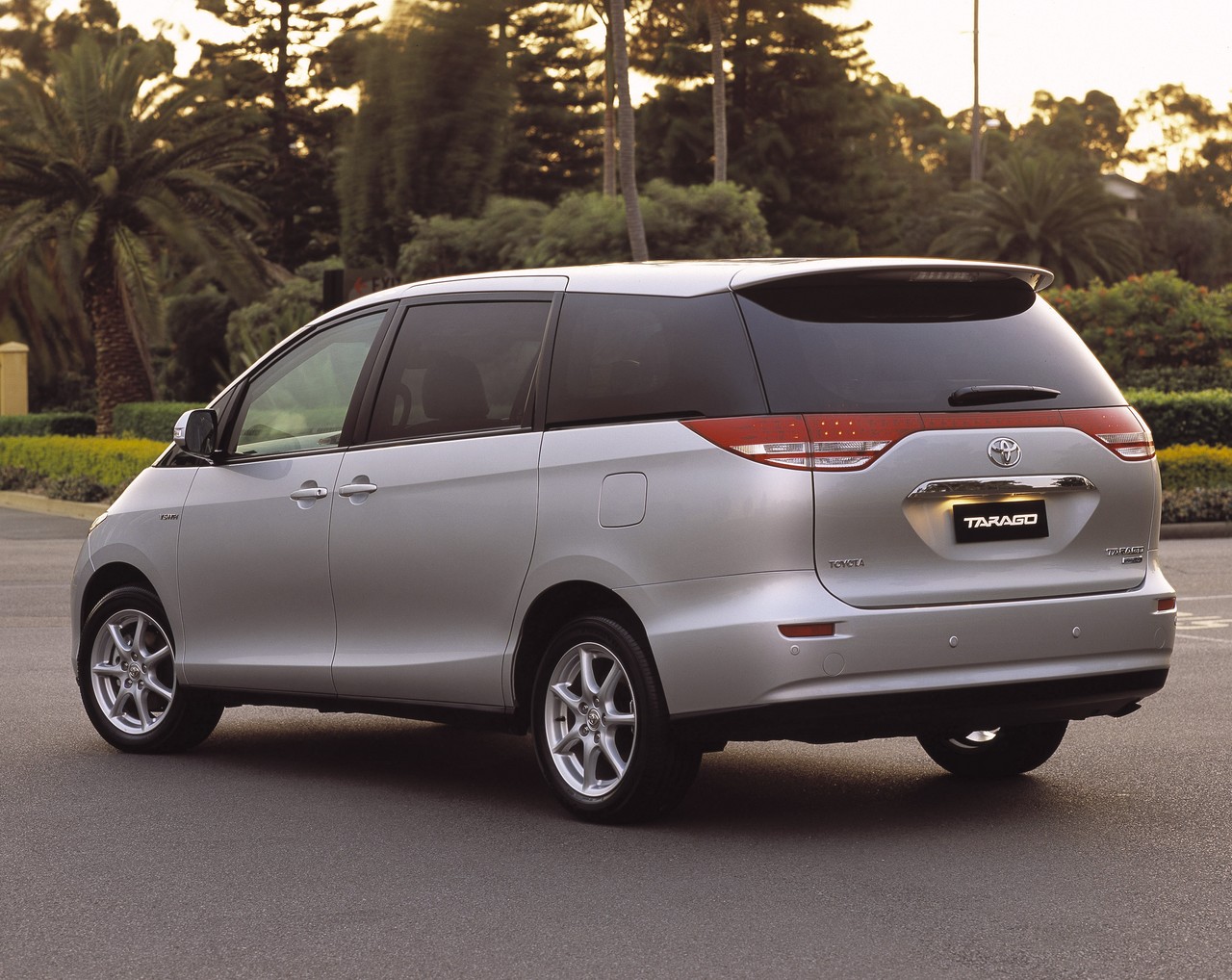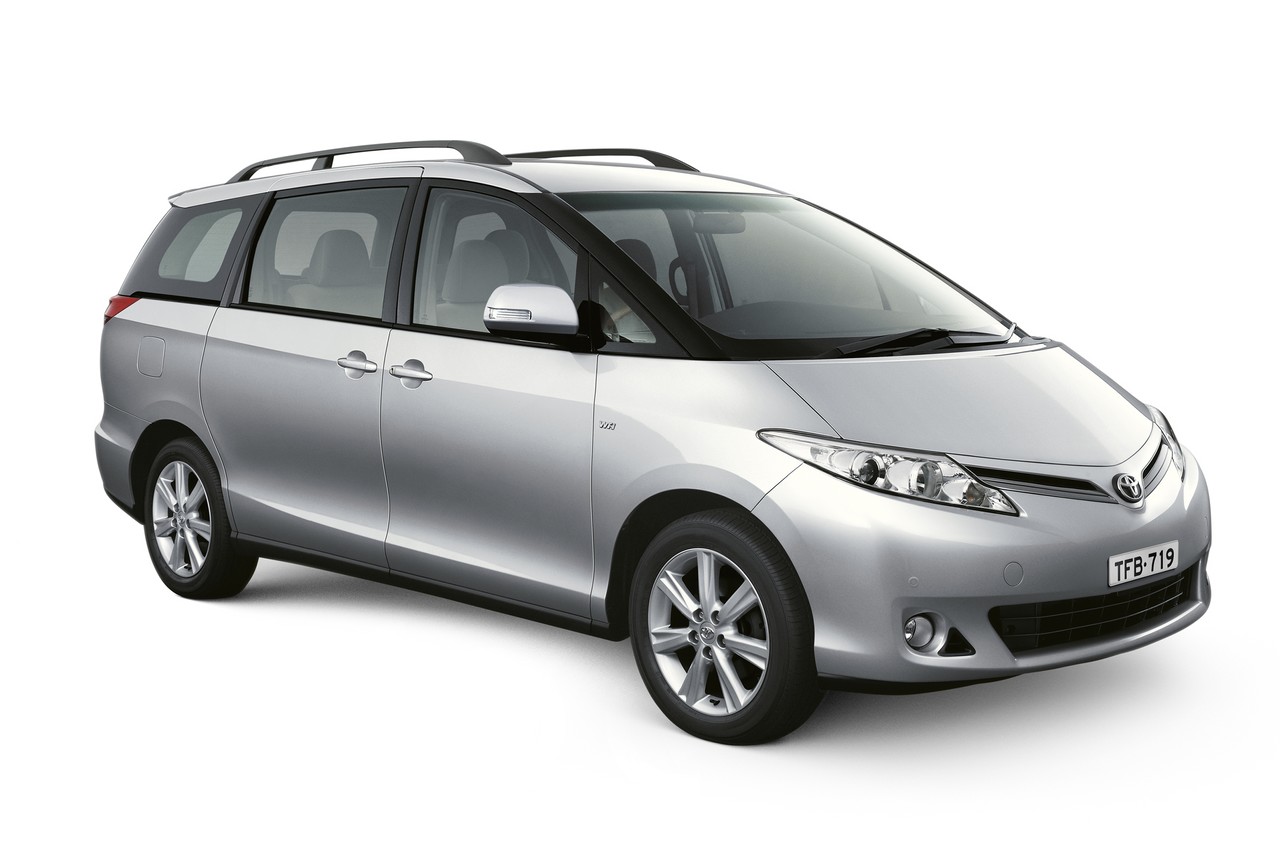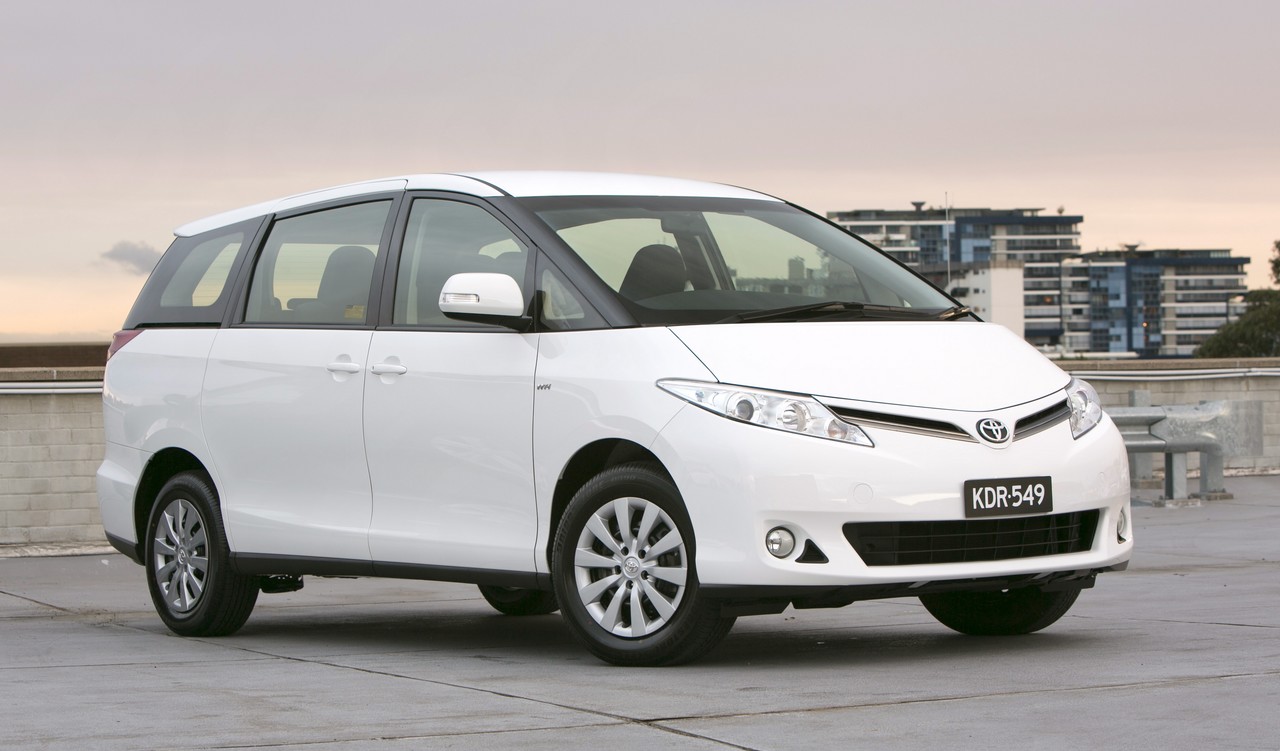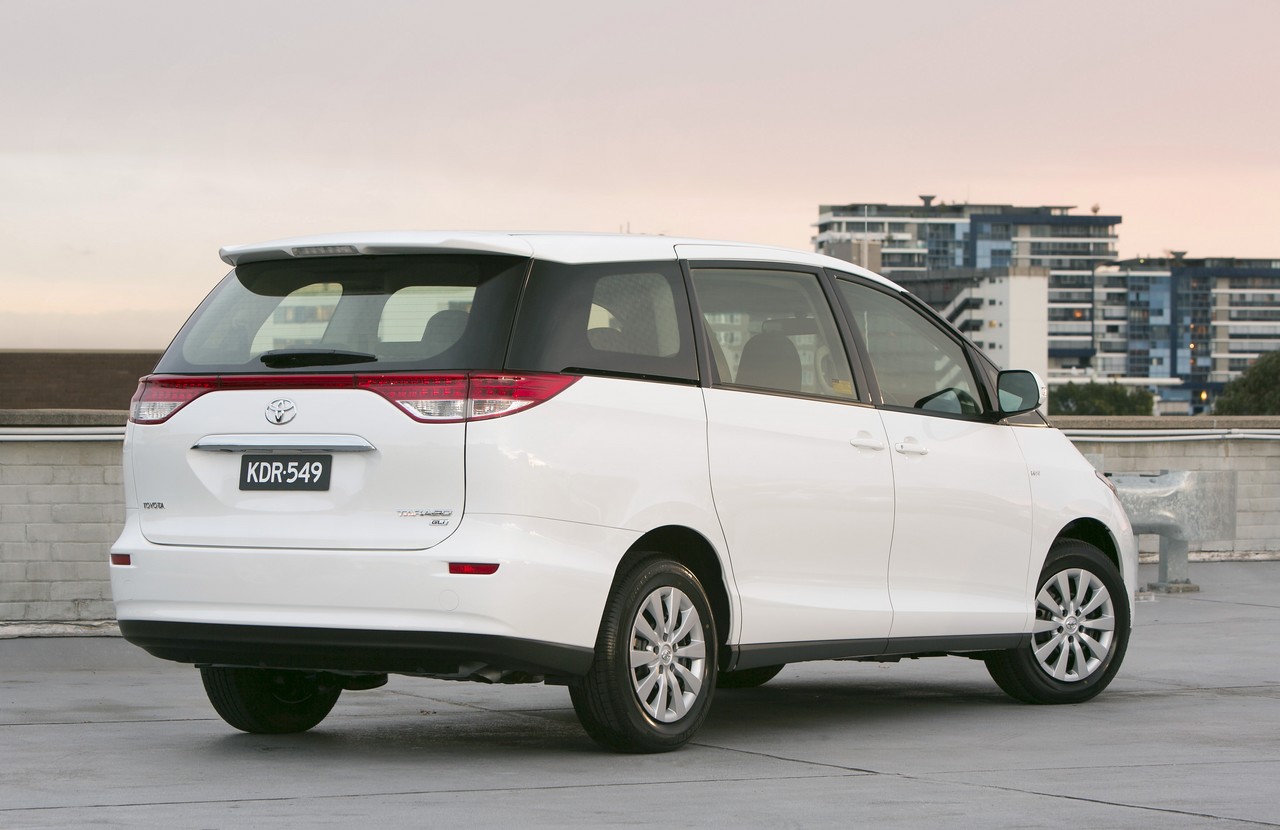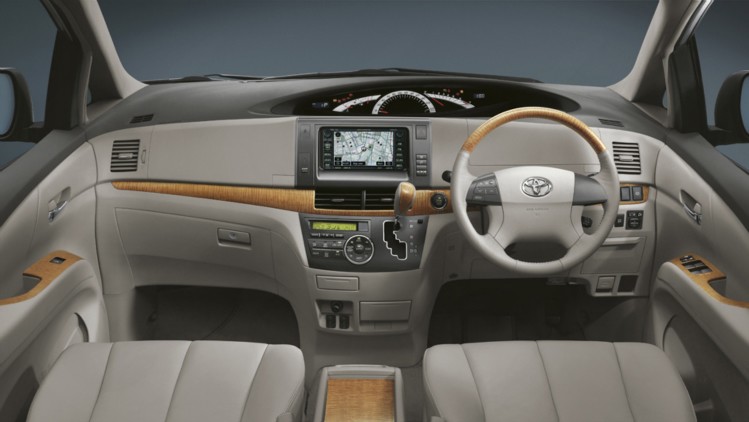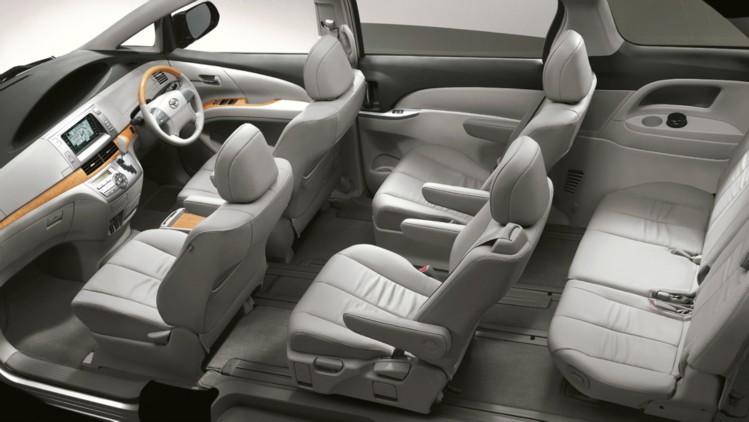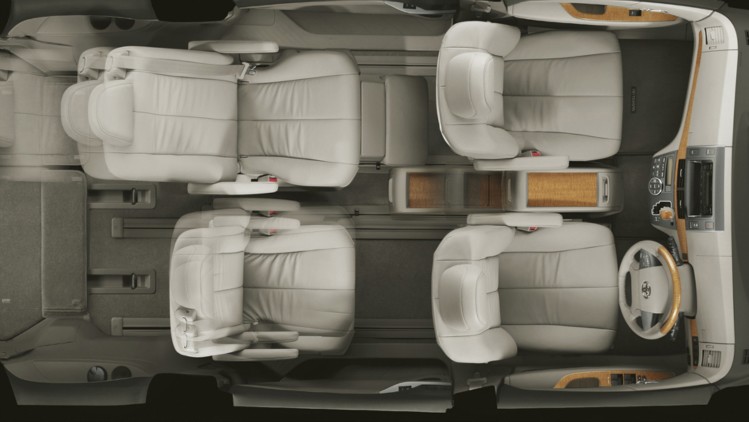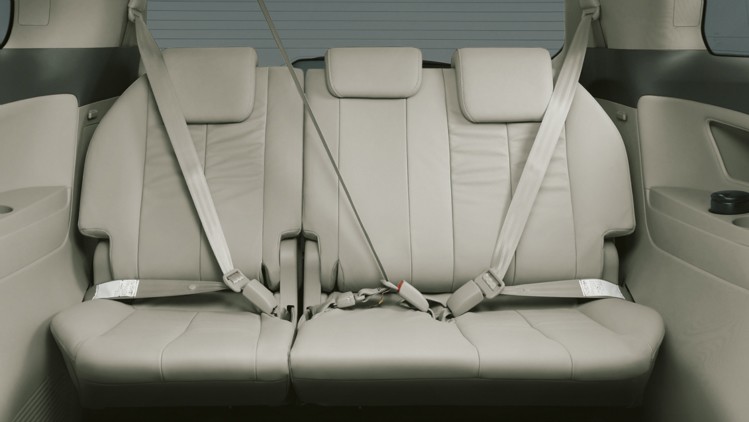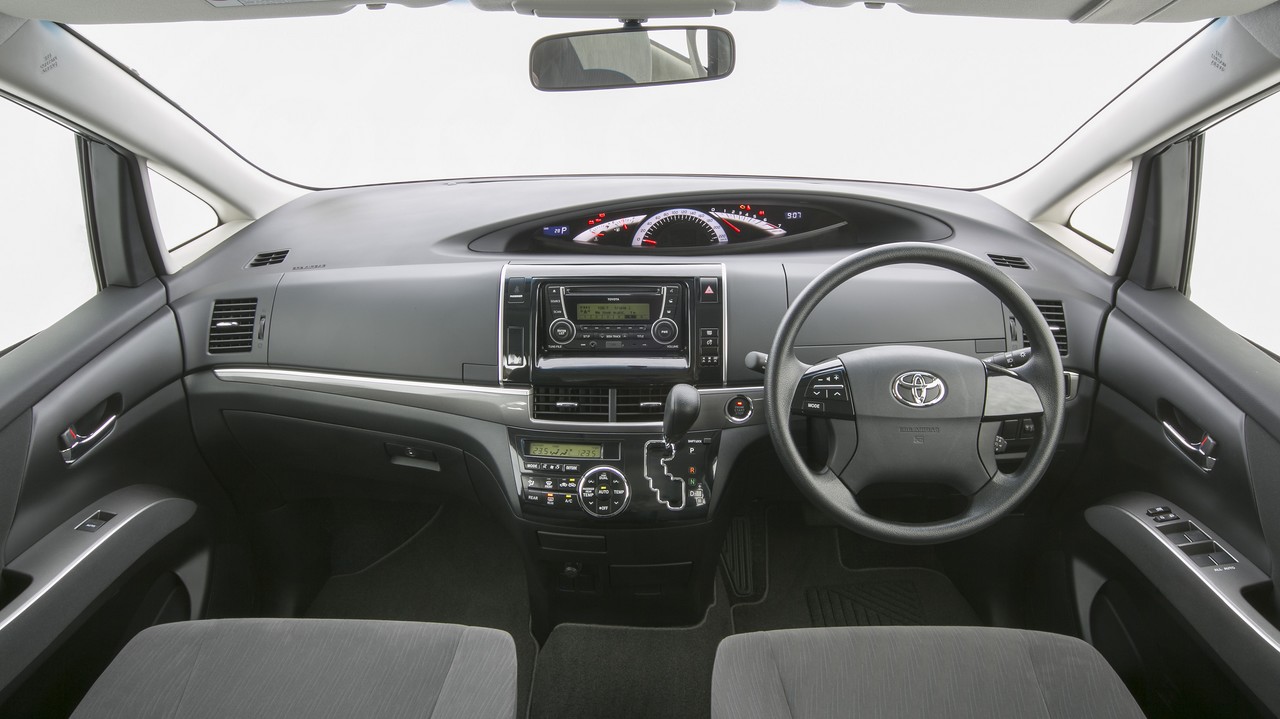
- Refined 3.5-litre 2GR-FE V6 engine
- Spacious interior
- Quiet, well-insulated cabin
- Comfortable ride
- With four-speed auto, 2.4-litre 2AZ-FE engine is underpowered when laden
- Steering lacks precision and feel
- Oil consumption concerns for 2.4-litre 2AZ-FE engine
Review: Toyota XR50.I Tarago (2006-09)
Overview
Released in March 2006, the Toyota XR50 Series I (XR50.I) Tarago was a large people mover. Manufactured in Japan, the front-wheel drive Tarago range was initially powered by a 2.4-litre four-cylinder petrol engine – with variable inlet valve timing – that was mated to a four-speed automatic transmission. Furthermore, the range consisted of GLi and GLX variants, both of which had eight seats.
In February 2007, the range was expanded with the introduction of a 3.5-litre V6 petrol engine that was mated to a six-speed automatic transmission. Within the V6 range, the GLX and newly-introduced Ultima variants had seven seats.
2AZ-FE and 2GR-FE engines
Of the engines,
- The 2.4-litre 2AZ-FE four-cylinder petrol engine had an aluminium block and cylinder head, double overhead camshafts, four valves per cylinder, variable intake valve timing (Toyota’s ‘VVT-i’), twin counter-rotating balance shafts, electronic throttle control and a compression ratio of 9.6:1; and,
- The 3.5-litre 2GR-FE V6 petrol engine had an aluminium block and cylinder head, double overhead cams per cylinder bank, four valves per cylinder, dual variable valve timing (which controlled phasing on intake and exhaust camshafts), an Acoustic Control Induction System (ACIS) which increased the length of the induction tract for low-rev torque and shortened the tract for top-end power, and a compression ratio of 10.8:1.
| Engine | Years | Trans. | Variant | Seats | Peak power | Peak torque |
|---|---|---|---|---|---|---|
| 2.4-litre petrol I4 (2AZ-FE) | 2006-09 | 4sp auto | GLi, GLX |
8 | 125 kW at 6000 rpm | 224 Nm at 4000 rpm |
| 3.5-litre petrol V6 (2GR-FE) | 2007-09 | 6sp auto | GLi | 8 | 202 kW at 6200 rpm | 340 Nm at 4700 rpm |
| GLX, Ultima |
7 |
Dimensions and body
Compared to the Toyota XR30 Tarago , the XR50 Tarago was 45 mm longer (at 4795 mm), 10 mm wider (1800 mm), 20 mm lower (1750 mm) and had a 50 mm longer wheelbase (2950 mm); the body was also more aerodynamic and achieved a 20 per cent increase in rigidity.
Suspension and steering
The XR50 Tarago had MacPherson strut front suspension and torsion beam rear suspension. The XR50 Tarago also introduced electric power-assisted steering.
Safety equipment
Standard safety equipment for the 2.4-litre Tarago GLi included dual front airbags, ABS, electronic brake force distribution, brake assist and front seatbelts with pretensioners and load limiters.
All other variants in the range (i.e. the Tarago V6 GLi and GLX and Ultima variants) were further equipped with front side airbags, a driver’s knee airbag, full-length curtain airbags (i.e. for all three rows), electronic stability control, traction control and Toyota’s Pre-Crash Seatbelt System which prepared the seatbelts for imminent collisions.
ANCAP crash testing
In ANCAP crash testing , a 2007 Tarago GLi fitted with a 2.4-litre petrol engine – and equipped with dual front airbags – received a four star adult occupant protection rating with a score of 30.45 out of 37. In the offset crash test, protection from serious leg injury was weak for the driver. In the side impact test, a default score was awarded.
Features: Tarago GLi, GLX and Ultima
Standard features for the 2.4-litre Tarago GLi included 16-inch steel wheels with a full size spare, a six speaker sound system with MP3-compatible CD player, dual zone climate control air conditioning, cruise control, steering wheel audio controls, automatic headlights, 60/40 split and folding second and third row seats, remote central locking, power windows and mirrors, a tilt and reach adjustable steering wheel, height adjustable driver’s seat, 12 volt power outlets, tinted windows and an immobiliser. The Tarago V6 GLi also featured dual zone climate control air conditioning.
The Tarago GLX was further equipped with 17-inch alloy wheels, three zone climate control air conditioning, front and rear parking sensors and roof rails.
Beyond this, the Tarago Ultima added a satellite navigation system, heated front seats, high intensity discharge (HID) directional headlights, a power-sliding passenger side door and a two-pane sunroof (one pane fixed and one tilt-adjustable).
February 2008: Tarago update
The XR30.I Tarago underwent a minor update in February 2008 – the standard sound system added an auxiliary input, while the Ultima received Bluetooth connectivity and a rear DVD player.
Related links
Review: Toyota XR50.II Tarago (2009-19)
Overview
Released in February 2009, the XR50 Series II (XR50.II) Tarago featured improved safety equipment and minor cosmetic updates. Visually, the XR50.II Tarago could be identified by its new headlights, lower radiator grille with Toyota logo, new rear combination lights. Furthermore, the GLX was fitted with 17-inch seven-spoke alloy wheels (previously 16-inch wheels), while the Ultima was fitted with 17-inch ten-spoke alloy wheels. Inside, there was an improved instrument panel and new interior trims: ‘Mid Grey’ for the 2.4-litre models and ‘Sandstone’ for 3.5-litre V6s.
As part of an update in July 2012, the 2.4-litre four-cylinder engine was mated to a continuously variable transmission (CVT) which had seven pre-set ratios for sequential shifting.
| Engine | Years | Trans. | Variant | Seats | Peak power | Peak torque |
|---|---|---|---|---|---|---|
| 2.4-litre petrol I4 (2AZ-FE) | 2009-12 | 4sp auto | GLi, GLX |
8 | 125 kW at 6000 rpm | 224 Nm at 4000 rpm |
| 2012-19 | 7sp CVT | |||||
| 3.5-litre petrol V6 (2GR-FE) | 2009-19 | 6sp auto | GLi | 8 | 202 kW at 6200 rpm | 340 Nm at 4700 rpm |
| GLX, Ultima |
7 |
Safety equipment
Compared to its XR50.I predecessor, standard safety equipment was improved with the introduction of active front seat head restraints for all variants. Hill start assist was also introduced for the 2.4-litre GLX and Ultima and all V6 models (i.e. all variants other than the 2.4-litre GLi).
From October 2010, a driver’s knee airbag, front side airbags, full-length curtain airbags, electronic stability control and traction control were fitted as standard.
ANCAP crash testing
In ANCAP crash testing , models manufactured from October 2010 received a five star adult occupant protection rating with a score of 34.45. In the offset crash test, there was a slight risk of serious chest and leg injury for the front occupants. A default score was awarded in the side impact test and two points were awarded in the pole test.
Features
For the Toyota XR50.II Tarago, standard features were extended to include rear seat ‘conversation mirrors’. Furthermore, the Tarago GLi and GLX were fitted with automatically closing side doors (previously reserved for the Ultima).
July 2012: Toyota Tarago update
In July 2012, standard features for the Toyota Tarago were extended to include push-button start and Toyota’s multi-function Optitron instrument display (previously reserved for the V6 GLX and Ultima); the GLi variants were also fitted with an updated audio system with a three-line dot matrix text display, FM radio text and voice recognition (for some phone and audio functions).
The Tarago V6 GLX was further equipped with high intensity discharge (HID) headlights and a power-sliding passenger-side door (previously reserved for the Ultima), while standard features for both the V6 GLX and Ultima variants were extended to include a keyless entry system.
Finally, the Tarago Ultima received an upgraded entertainment system with a nine-inch LCD display (compatible with Blu-ray discs and DVDs) – the system also included a single CD player, 3.5 mm auxiliary jack, USB input and Bluetooth mobile phone connectivity and audio streaming. Inside, the Ultima variants were also fitted with new woodgrain trim patterns.
August 2016: Toyota Tarago update
In August 2016, standard features for the Toyota XR50.II Tarago were extended to include a 6.1-inch touch screen with satellite navigation, SUNA live traffic updates, Bluetooth mobile phone connectivity and audio streaming, voice recognition and a rear view camera. For the Tarago V6 GLX and Ultima, new ‘premium’ seats were introduced which had ‘quilted suede-like black fabric flanked by synthetic leather’; the Tarago V6 GLX also gained two-step heated front seats and directional HID (high intensity discharge) headlights.
As part of the update, interior changes included the introduction of a soft-touch dashboard, piano black trim for the centre stack and air vents, and improved HVAC (heating, ventilation and air conditioning) controls with electrostatic switches. The instrument cluster was also revised to incorporate a 4.2-inch multi-information display; the information shown could be controlled by pressing buttons on the new three-spoke steering wheel. According to Toyota, the electric power-steering system was also improved with a revised intermediate shaft that provided ‘a more direct on-centre feel’.
Brochures
- Brochure: Toyota XR50.II Tarago (February 2009)
- Brochure: Toyota XR50.II Tarago (July 2012)
- Brochure: Toyota XR50.II Tarago (September 2014)
Related links
- Press Release: Toyota XR50.II Tarago (February 2009)
- Press Release: Toyota XR50.II Tarago update (July 2012)
- Toyota Australia: Toyota Tarago
- Wikipedia.org: Toyota XR50 Previa/Tarago
